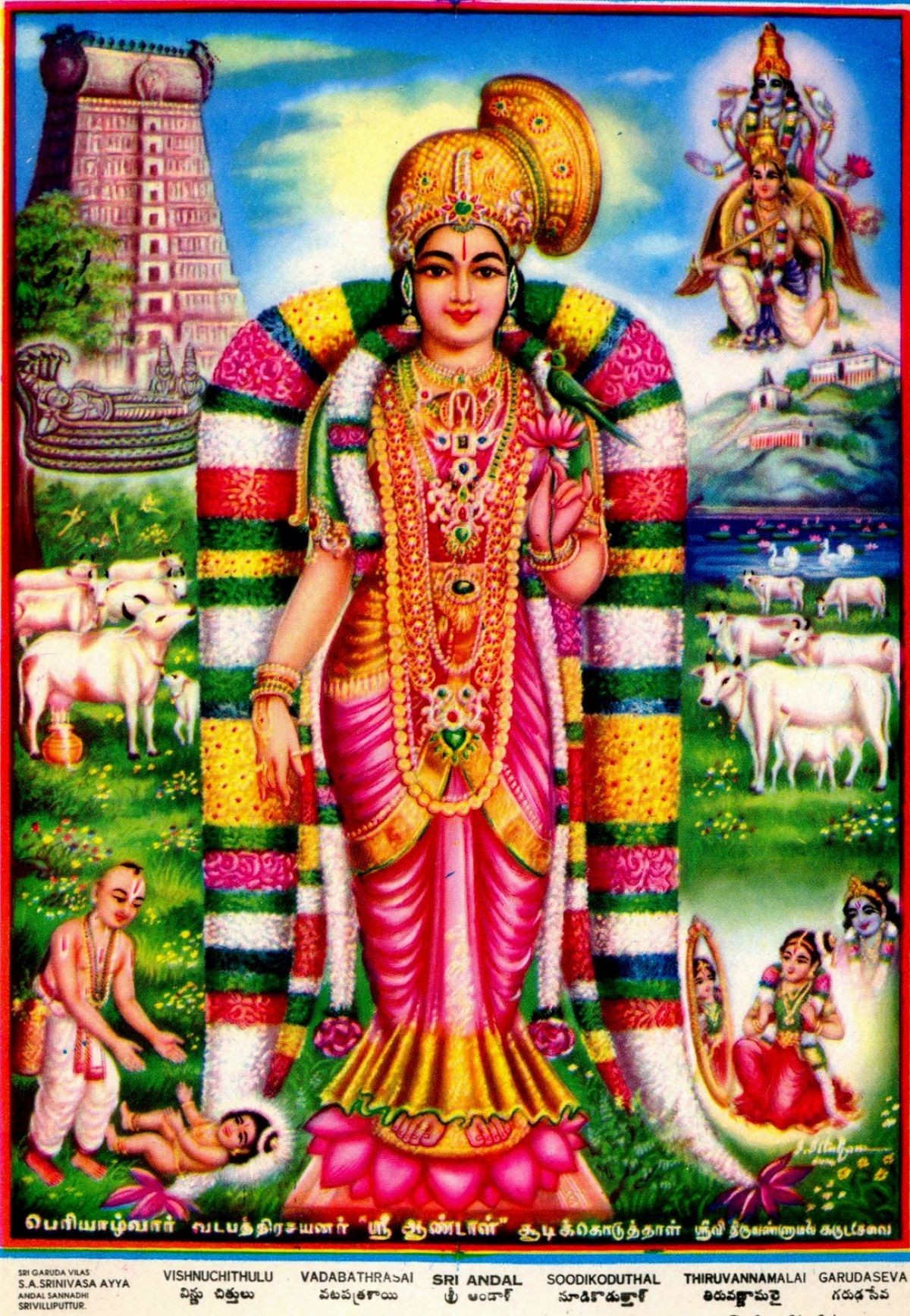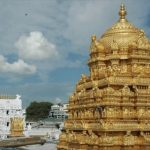The month of Dhanur or Margazhi is here, it is the period of devotion and surrender to the Krishna. It is during this time that Andal sang the Tiruppavai songs (30 in number) in the month of Margazhi. She basically imitated the gopikas who performed the ‘Katyayani vrata” as shown in the Bhagavata Purana, where it says – “hemante prathame maase nandavraja-kumaarikaaH | cheruH havishyam bhunjaanaH kaatyaayani-archana-vratam.” The first month of ‘Hemanta ritu is margashirsha or margazhi”. Krishna himself declares in the Bhagavad Geetha – maasaanaam maargasheersho’ham, meaning He is maargashira amongst the months. This indicates the greatness of the month. So the gopikas chose that month to observe the katyayana vrata to attain Krishna. The fruit of the vrata is shown in the subsequent sloka: kaatyaayani mahaamaaye mahaayogini adheesvari | nandagopa-sutam devi patim me kuru te namaH. Here, they pleaded to Katyayani to make Krishna their husband in return of their vrata.

The most famous thing about Margazhi is “Thiruppavai”. Sri Andal’s thirty verses for the thirty days of this holy month, dedicated to the worship and praise of the Lord to the exclusion of all other celebrations and earthly events.
Andal or Kodai is one of the twelve Alwars or saints in the Vaishnava tradition.She lived in the first half of 8th century CE Some scholars fix the possible date of Andal as far back as 3000 years BCE. Andal was born at Srivilliputhur near Madurai, in the Tamil month of Adi.
Read: Dhanurmasam : Tiruppavai – Pasuram 1
Sri Andal’s story
Andal was discovered as a baby by her foster father Periazhwar in his garden. Periyazhwar Andal grew up with intense devotion to the Lord and was so fond of Lord Krishna that she pictured herself as one of the Gopikas and aspired to wed the Lord. Her father used to make a garland for the Lord everyday and take it to the temple and adorn the God. Andal used to take that garland and wear itself and picture the scene of the Lord putting the garland on her (symbolic of the marriage) and then admire the enhancement of her beauty and glow as she wore the Lord’s garland. Legend has it that one day as everyday she had worn the garland before her father took it to the temple. But on that day the priest notices a strand of hair on the garland and refused to put it on the Lord saying this is not pure and that someone had already worn it. Periazhwar was totally crestfallen at this very inauspicious happening and came home dejected and scolded the child severely. In some time, the Lord appears in the mind of the priest and orders him to bring the garland back saying that is the garland that he likes, The priest and andal’s father Periazhwar, realise the true nature of Andal’s intense devotion and the appreciation of the same by the Lord and wear the garland on the Lord to everyone’s joy.

Lord Ranganatha appeared to Perialwar in a dream and asked him to bring Andal to Sri Rangam in bridal attire. A palanquin, beautifully decorated, was sent from the Sri Rangam temple as instructed by the Lord in a dream to the temple chief. King Vallaba Deva made elaborate arrangements, decorated the procession route, joined the bridal party and greeted Andal with music and other auspicious symbols needed for a Divine wedding. People cheered.
Andal walked into the sanctum sanctorum of the temple and as she worshipped the Lotus Feet of Perumal, she became one with the Lord. To the astonishment and wonder of the people assembled, Andal’s physical body merged with the Deity, Lord Ranganatha.
Reciting of Tiruppavai
Reciting Tiruppavai in the month of margazhi is a remembrance of Andal’s deeds. More than we remembering Andal, it is a way of reminding Krishna (or any form of Vishnu in their respective temples) about Andal, which was one of the sweetest memories for Him. That is why every temple has this recitation of Tiruppavai in the early hours throughout the Margazhi month. Also, around the 30th day (or the last day of Margazhi), temples hold the ritual of Andal’s wedding with Krishna. This is popularly called Andal Kalyanam, which signifies her wedding with Krishna in accordance with what she sought with the Tiruppavai vrata.

Apart form Thiruppavai, Andal has also composed and sung 143 Hymns in Nachiar Tirumozhi in which her intense love for Krishna, in varying moods of bridal love expressing tender hope, utter dejection, joyful triumph, woeful sorrow and total surrender, are depicted. Andal came to the conclusion that Lord Krishna was the Deity of Sri Rangam–Lord Ranganatha– and chose Him as her Consort.
Margazhi–the holy month of prayer, devotional singing and austerity is always associated with Andal and her divine love for Perumal. Her songs are sung, one each day in the prescribed order and she is venerated as a saint!
Must Read : Significance of Dhanurmasam – A Month of Devotion
Must Read : Divine Mysteries : The Ever Mysterious Chidambara Rahasyam









